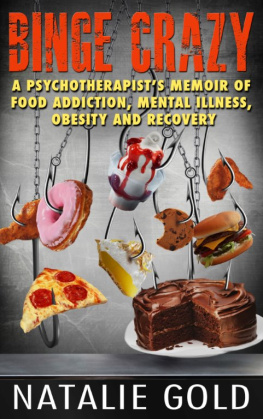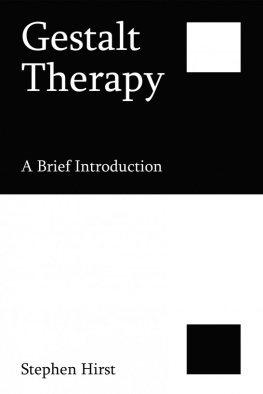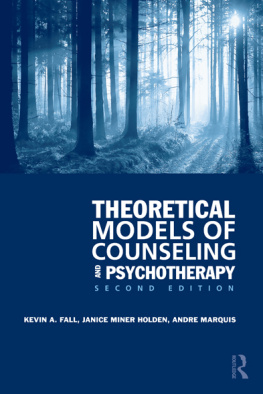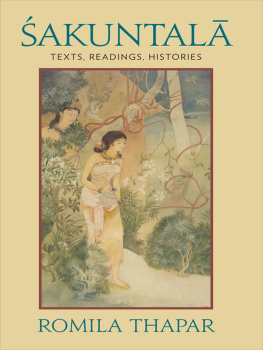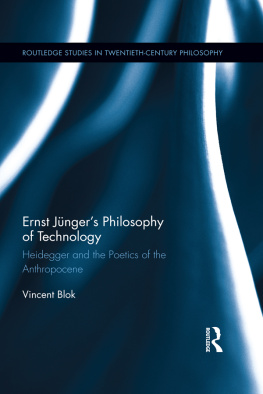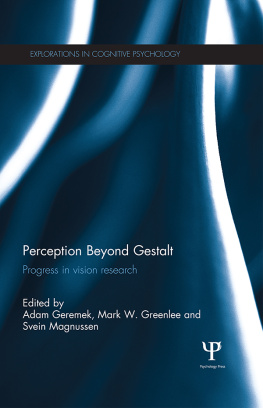
SAGE Counselling in Action
Series Editor: WINDY DRYDEN
SAGE Counselling in Action is a bestselling series of short, practical introductions designed for students and trainees. Covering theory and practice, the books are core texts for many courses, both in counselling and other professions such as nursing, social work and teaching. To celebrate its 25th Anniversary, SAGE is publishing several new editions, continuing to provide its readership access to the knowledge and expertise that has made the series so successful. Books in the series include:
Diana Whitmore
Psychosynthesis Counselling in Action, Fourth Edition
Ian Stewart
Transactional Analysis Counselling in Action, Fourth Edition
Dave Mearns and Brian Thorne with John McLeod
Person-Centred Counselling in Action, Fourth Edition
Sue Culley and Tim Bond
Integrative Counselling Skills in Action, Third Edition
Peter Trower, Jason Jones, Windy Dryden and Andrew Casey
Cognitive-Behavioural Counselling in Action, Second Edition
Michael Jacobs
Psychodynamic Counselling in Action, Fourth Edition
Tim Bond
Standards and Ethics for Counselling in Action, Third Edition
Windy Dryden and Andrew Reeves
Key Issues for Counselling in Action, Second Edition
Windy Dryden
Rational Emotive Behavioural Counselling in Action, Third Edition
Patricia DArdenne and Aruna Mahtini
Transcultural Counselling in Action, Second Edition

First, second, third, fourth editions SAGE Publications Ltd 1989, 1999, 2004, 2013
Updates to fourth edition Simon Cavicchia 2014
First edition published in 1989. Reprinted 1990, 1991, 1992, 1993 (twice) 1994, 1995, 1996, 2000
Second edition published 1999. Reprinted 2003
Third edition published 2004. Reprinted 2009
This fourth edition published 2014
Apart from any fair dealing for the purposes of research or private study, or criticism or review, as permitted under the Copyright, Designs and Patents Act, 1988, this publication may be reproduced, stored or transmitted in any form, or by any means, only with the prior permission in writing of the publishers, or in the case of reprographic reproduction, in accordance with the terms of licences issued by the Copyright Licensing Agency. Enquiries concerning reproduction outside those terms should be sent to the publishers.
Library of Congress Control Number: 2013942717
British Library Cataloguing in Publication data
A catalogue record for this book is available from the British Library
ISBN 978-1-4462-1127-4
ISBN 978-1-4462-1128-1 (pbk)

SAGE Publications Ltd
1 Olivers Yard
55 City Road
London EC1Y 1SP
SAGE Publications Inc.
2455 Teller Road
Thousand Oaks, California 91320
SAGE Publications India Pvt Ltd
B 1/I 1 Mohan Cooperative Industrial Area
Mathura Road
New Delhi 110 044
SAGE Publications Asia-Pacific Pte Ltd
3 Church Street
#10-04 Samsung Hub
Singapore 049483
Editor: Susannah Trefgarne
Editorial assistant: Laura Walmsley
Production editor: Rachel Burrows
Copyeditor: Helen Skelton
Proofreader: Kate Morris
Indexer: Avril Ehrlich
Marketing manager: Tamara Navaratnam
Cover design: Shaun Mercier
Typeset by: C&M Digitals (P) Ltd, Chennai, India
Printed and bound by CPI Group (UK) Ltd, Croydon, CR0 4YY

Contents
About the Authors
Petrska Clarkson was a professor and fellow of the British Association for Counselling and Fellow of the British Psychological Society. A Consultant Psychologist, Psychotherapist Supervisor and Management Consultant, she worked and taught at universities and private institutions internationally. Petrska sadly passed away in 2006.
Simon Cavicchia is a primary tutor on the MSc in Gestalt Psychotherapy at the Metanoia Institute in London. He is also Joint Programme Leader of the MSc in Coaching Psychology/MA in Psychological Coaching, also at Metanoia. He divides his time between teaching, working as a psychotherapist and supervisor and as an executive coach and consultant to leadership teams in public and private sector organisations. In all of these contexts, Simon stands firm in his love of Gestalt and what it can offer in terms of growth, learning and creativity.
Preface to the Fourth Edition
I was not fortunate enough to be taught by Petruska Clarkson, but do count myself privileged to have been trained by, and to know, a number of individuals who were taught by her and/or worked as colleagues with her for a number of years. In working on the fourth edition of Gestalt Counselling in Action I have enjoyed re-engaging with a core text, but primarily with the style and contribution of a leading Gestalt theorist and practitioner in the history of Gestalt counselling and psychotherapy training in the UK.
Clarkson places the Gestalt cycle of experience at the heart of this introduction and uses it as a gravitational force to organise a series of descriptions of, and perspectives on, Gestalt therapy in action. The cycle of experience is a significant theoretical map in the history of Gestalt therapy. Originally devised at the Gestalt Institute of Cleveland as a teaching aid, it has been taught in a variety of ways, and been critiqued and reworked on numerous occasions. This is in part because no theoretical articulation can fully capture the uniqueness and dynamism of human experience. Gestalt theorists are particularly alert to this phenomenon given the emphasis Gestalt places on remaining as close to experience as possible. Once we move into theoretical articulation, it is inevitable that immediacy can be lost and the risk of reductionism sets in.
The Gestalt cycle of experience arose out of, and is associated with, an orientation to practice that has focussed on how the client makes contact with the environment, identifying ways in which this contacting process might be less than helpful for healthy living, and exploring ways in which different and new strategies might be found in support of greater vitality and growth. Given the central focus on the cycle, earlier editions of this book have offered many examples of working in this way. Clarkson also goes to great lengths in earlier texts to caution the reader against reductionism, stressing that examples can only ever be a snapshot of a particular intervention at a particular moment in time in a specific client-counsellor context. They should never be imported wholesale and used randomly without sensitive attunement to the uniqueness and subtleties of the client-counsellor relationship. In this edition I have added a number of new examples from practice to illuminate theory and ground it in examples that might demonstrate the application of an idea, but encourage the reader again not to presume that stories represent tools or approaches to be used in any situation. They are, as all the examples in this book, unique snapshots of a moment in time.
The cycle, like all theory, is a metaphor. Rather like a map, a vehicle for conveying meaning and orientation in a territory far more complex and nuanced than the map itself. The cycle of experience lends itself particularly well to a book focusing on Gestalt theory in
Next page

